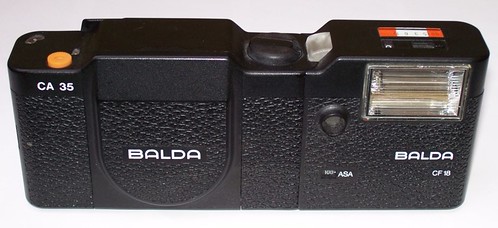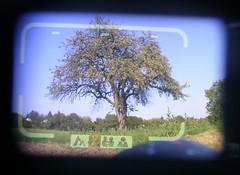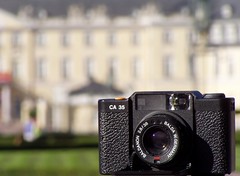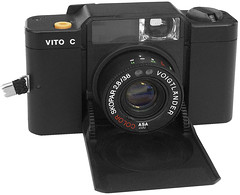Difference between revisions of "Balda CA 35"
(misc) |
Hanskerensky (talk | contribs) (Added link to user manual page) |
||
| (14 intermediate revisions by 8 users not shown) | |||
| Line 1: | Line 1: | ||
| + | {|class=floatright | ||
| + | | | ||
{{Flickr_image | {{Flickr_image | ||
| − | |image_source= http://www.flickr.com/photos/ | + | |image_source= http://www.flickr.com/photos/uwe_kulick/241580309/in/pool-camerawiki/ |
| − | |image= http://static.flickr.com/96/ | + | |image= http://static.flickr.com/96/241580309_8d6ef2de10_m.jpg |
|image_align= right | |image_align= right | ||
|image_text= view through finder | |image_text= view through finder | ||
| + | |image_by=Uwe Kulick | ||
| + | |image_rights=wp | ||
}} | }} | ||
| − | + | |- | |
| + | | | ||
{{Flickr_image | {{Flickr_image | ||
| − | |image_source= http://www.flickr.com/photos/ | + | |image_source= http://www.flickr.com/photos/uwe_kulick/232005109/in/pool-camerawiki/ |
|image= http://static.flickr.com/91/232005109_b5d1d7bc97_m.jpg | |image= http://static.flickr.com/91/232005109_b5d1d7bc97_m.jpg | ||
|image_align= right | |image_align= right | ||
| − | |image_text= | + | |image_text= Lens door open |
| + | |image_by=Uwe Kulick | ||
| + | |image_rights=wp | ||
| + | }}<br/> | ||
| + | {{Flickr_image | ||
| + | |image_source= http://www.flickr.com/photos/alf_sigaro/5094731098/in/pool-camerawiki/ | ||
| + | |image= http://farm5.staticflickr.com/4130/5094731098_1ca05aa771_m.jpg | ||
| + | |image_align= right | ||
| + | |image_text= The Vito C | ||
| + | |image_by= Alf Sigaro | ||
| + | |image_rights= nc | ||
}} | }} | ||
| − | |||
| − | '' | + | |} |
| + | The '''Balda CA 35''' is one of the very compact (sometimes called ultra-compact) [[35mm]] [[viewfinder camera]]s which were popular in the 1980s. It was made by the West German firm [[Balda|Balda (Bünde)]]. Body, front door and lens tube are made of black plastic. It has to be opened like an old folding camera: The lens tube comes out of the front of the camera when the front door is opened. The viewfinder's bright frame shows [[parallax]] marks near its top line. The distance selection ring around the lens tube is coupled to a red transparent marker in the finder that changes the colour of one of the distance symbols of the bright frame bottom line to red. The symbols are one man (1 metre), two men (1.5 metres), three men (3 metres) and a mountain (far distance). The [[film speed]] selection ring is placed around the front lens element. Above this ring are two little lenses of the camera's [[light meter]]. This meter controls the shutter speed and aperture. The optional flash Balda CF 18 can be coupled to the camera's left side. | ||
| + | |||
| + | The ultimate feature of this camera is its shutter's exposure "click" sound which distinguishes the CA 35 from all cheap plastic cameras. Balda also produced this camera for [[Voigtländer]] as '''Vito C''', the flash as Voigtländer VCS 18. A very similar model was produced as the [[Minox 35 ML]]. | ||
| + | |||
| + | [[Karl-Heinz Lange]], the chief camera engineer of [[Balda]], was the designer of this camera. He used his experiences from his time at [[Rollei]] where he was involved in the development of the [[Minox 35]], and where he had begun the development of the new camera which should become Rollei's ''Voigtländer Vito C''. | ||
| + | |||
| + | ==Specifications== | ||
*Type: compact viewfinder camera | *Type: compact viewfinder camera | ||
*Manufacturer: Balda | *Manufacturer: Balda | ||
*Year of launch: 1980s | *Year of launch: 1980s | ||
| − | *Film: 35mm with speeds 25 to 800 ASA | + | *Film: [[35mm]] with [[film speed|speeds]] 25 to 800 [[ASA]] |
*Lens: Baldanon 1:2.8/38mm (four elements in three groups) | *Lens: Baldanon 1:2.8/38mm (four elements in three groups) | ||
*Viewfinder: optical finder with a bright frame that includes distance symbols, LED indicators show need of flash and exposure success | *Viewfinder: optical finder with a bright frame that includes distance symbols, LED indicators show need of flash and exposure success | ||
| Line 24: | Line 45: | ||
*Exposure: meter-controlled aperture and shutter speed | *Exposure: meter-controlled aperture and shutter speed | ||
*Film advance: Lever with exposure counter, and rewind crank | *Film advance: Lever with exposure counter, and rewind crank | ||
| − | *Flash: With ASA | + | *Flash: With [[ASA]] pre-selection, and electronic control supported by a photo resistor (sensor window with two selectable apertures) |
*Weight: 170g with film and batteries | *Weight: 170g with film and batteries | ||
*Size: ca. 102×63×32 mm | *Size: ca. 102×63×32 mm | ||
| + | |||
| + | ==Links== | ||
| + | *[https://www.butkus.org/chinon/balda/balda_ca_35/balda_ca_35.htm Balda CA 35 user manual] at [https://www.butkus.org/chinon/ Butkus.org] | ||
| + | |||
{{Flickr_image | {{Flickr_image | ||
| − | |image_source= http://www.flickr.com/photos/ | + | |image_source= http://www.flickr.com/photos/uwe_kulick/232005107/in/pool-camerawiki/ |
|image= http://static.flickr.com/84/232005107_53395386e9.jpg | |image= http://static.flickr.com/84/232005107_53395386e9.jpg | ||
|image_align= left | |image_align= left | ||
| − | |image_text= | + | |image_text= With door closed and flash attached |
| + | |image_by=Uwe Kulick | ||
| + | |image_rights=wp | ||
}} | }} | ||
| − | + | ||
| − | + | [[Category: 35mm ultra compact]] | |
| − | + | [[Category: German 35mm viewfinder folding]] | |
| − | + | [[Category: Balda|CA 35]] | |
| − | + | [[Category: B]] | |
| − | + | [[Category:C|CA 35 Balda]] | |
| − | [[Category:35mm ultra compact]] | ||
| − | [[Category:35mm viewfinder folding | ||
| − | |||
| − | [[Category:Balda|CA 35]] | ||
| − | [[Category:B]] | ||
| − | [[Category:C]] | ||
Latest revision as of 04:51, 5 July 2023
| ||||
|
The Balda CA 35 is one of the very compact (sometimes called ultra-compact) 35mm viewfinder cameras which were popular in the 1980s. It was made by the West German firm Balda (Bünde). Body, front door and lens tube are made of black plastic. It has to be opened like an old folding camera: The lens tube comes out of the front of the camera when the front door is opened. The viewfinder's bright frame shows parallax marks near its top line. The distance selection ring around the lens tube is coupled to a red transparent marker in the finder that changes the colour of one of the distance symbols of the bright frame bottom line to red. The symbols are one man (1 metre), two men (1.5 metres), three men (3 metres) and a mountain (far distance). The film speed selection ring is placed around the front lens element. Above this ring are two little lenses of the camera's light meter. This meter controls the shutter speed and aperture. The optional flash Balda CF 18 can be coupled to the camera's left side.
The ultimate feature of this camera is its shutter's exposure "click" sound which distinguishes the CA 35 from all cheap plastic cameras. Balda also produced this camera for Voigtländer as Vito C, the flash as Voigtländer VCS 18. A very similar model was produced as the Minox 35 ML.
Karl-Heinz Lange, the chief camera engineer of Balda, was the designer of this camera. He used his experiences from his time at Rollei where he was involved in the development of the Minox 35, and where he had begun the development of the new camera which should become Rollei's Voigtländer Vito C.
Specifications
- Type: compact viewfinder camera
- Manufacturer: Balda
- Year of launch: 1980s
- Film: 35mm with speeds 25 to 800 ASA
- Lens: Baldanon 1:2.8/38mm (four elements in three groups)
- Viewfinder: optical finder with a bright frame that includes distance symbols, LED indicators show need of flash and exposure success
- Focusing: manually
- Exposure: meter-controlled aperture and shutter speed
- Film advance: Lever with exposure counter, and rewind crank
- Flash: With ASA pre-selection, and electronic control supported by a photo resistor (sensor window with two selectable apertures)
- Weight: 170g with film and batteries
- Size: ca. 102×63×32 mm
Links

|
| With door closed and flash attached image by Uwe Kulick (Image rights) |


